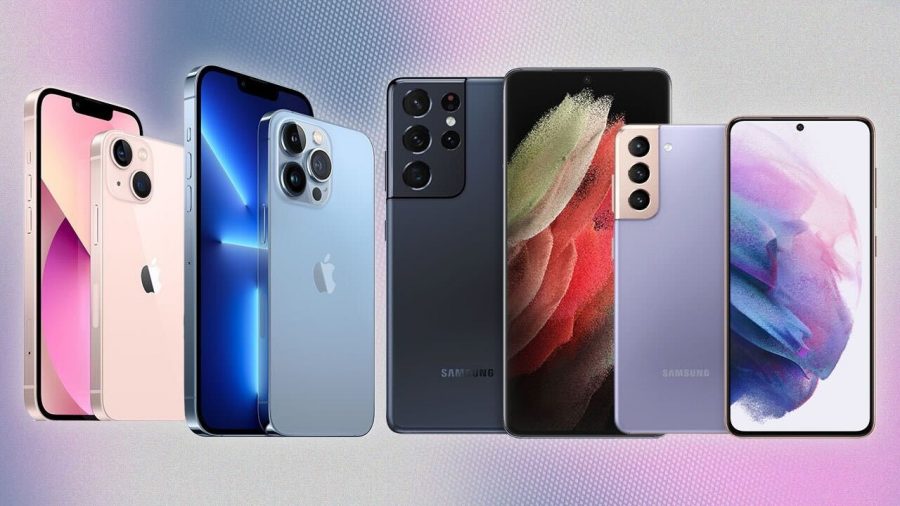New Technology in 2021: Benefits for All Consumers, But Availability for Some
November 10, 2021
Over the course of August and September, global tech giants Apple and Samsung, along with several other companies that offer consumer electronics, unveiled many of their smartphone and electronic offerings for 2021. South Korean Samsung kicked off the festivities on August 26, when they released the foldable Galaxy Z Flip 3 smartphone for prices starting at $999. Three weeks later September 17, Apple held their annual event at the Apple Park global headquarters in Cupertino, CA, under the tagline “California Streaming”, to reveal their flagship and updated products for the holiday season. During this event, Apple revealed the iPhone 13 and its four models: the cost-effective Mini, the $799 regular version, the $999 higher-end Pro, and the flagship Pro Max, in addition to unveiling the Apple Watch Series 7 and launching the 9th generation of iPads with two revisions of the iPad and iPad Mini. The iPhone 13 was released on September 24 for prices ranging from a respectable $699 for the entry-level Mini to a whopping $1,599 for the 1-terabyte model of the Pro Max.
Even though Apple and Samsung’s products are readily available and unaffected by the supply chain slowdowns and part shortages that have plagued the 2020 holiday season and all of 2021 thus far, other electronic devices and components have been severely affected in terms of availability. Furthermore, prospective buyers have suffered considerably from scalpers dominating the limited supply of products that are available from periodic restocks. Scalpers are resellers who constantly buy out all available stock of products treated as hot commodities for the purposes of putting them up for sale at much higher prices than the MSRP and profiting immensely from impatient consumers who choose to do business with them. Scalpers have historically targeted the sneaker market to capitalize on, due to the wide unavailability and exclusivity of certain models (e.g. the Travis Scott x Air Jordan 1, the Nike Air Yeezy Red October), but they are known for branching out to the electronics industry amid the release of highly-anticipated products, and to this end, have recently targeted items such as GPUs and the 9th generation of video game consoles for resale in pursuit of large profits.
GPU stands for Graphic Processing Unit, which are specialized processors designed to accelerate graphics rendering in PCs. The prices for GPUs have skyrocketed since the onset of the COVID-19 pandemic due to issues such as semiconductor and chip shortages, which in turn lead to desirable conditions for resellers to capitalize on at the expense of consumers. A normal price for GPUs, in a market operating without issue, usually lies between $200-450, but in the wake of COVID-19, prices have spiked to a range of around $700-1200 due to scalpers controlling the market for the elusive products and because of the current lack of availability and infrequent limited restocks on GPUs, leaving consumers with little options to obtain the products they desire without supporting the actions of scalpers and contributing to their profits.
Fortunately, for people caught in a dilemma between paying scalpers now or waiting later for restocks and wide availability to buy the electronics they want, market prices on such products usually begin to fall after being actively manufactured for around a year or longer. GPUs and other consumer electronics currently suffering from limited availability, therefore, are expected to gradually decrease in price beginning around the end of 2022, when the current component shortages are expected to be corrected and problems with the supply chain are resolved.



